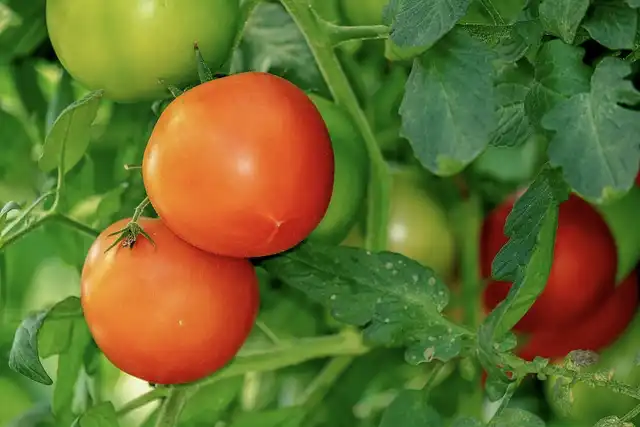New research from UMass Amherst the first to examine entire tomato species, from tiny, hairy and terrible-tasting to large and sweet.
Biologists at the University of Massachusetts Amherst have found evidence for evolutionary “syndromes”—sets of traits that occur together—that help to explain how tomatoes first evolved their distinctive blend of color, sweetness, acidity and aroma. The research, represented by a pair of papers recently published in Plants People Planet and The American Journal of Botany, not only shines a light on how fruits evolve in the wild, but will also be valuable to crop-improvement efforts aimed at breeding more nutritious and appealing varieties of fruits.
“Have you ever held a fresh tomato in your hand and wondered why it looks good, smells good and tastes delicious?” asks Jacob Barnett, graduate student in organismic and evolutionary biology at UMass Amherst and the papers’ lead author. It turns out that the juicy, red tomatoes with their unique flavor have a long and circuitous evolutionary history.
Barnett and his co-authors, including Ana Caicedo, professor of biology at UMass Amherst, turned to the relatives of our modern tomatoes, a group of several wild species growing in the western coast of South America, from Chile to Ecuador, to explore this question. And those wild species are nothing like what you’d find in your sandwich or salad today.
“For one thing, they’re tiny,” says Barnett, “about the size of a blueberry. And most of them are green when ripe. Many smell like apples, melons or even cucumbers, and a number of them taste terrible.”
So how did we get from a tiny, green, terrible-tasting, melon-smelling fruit to the sublime blend of color, sweetness, acidity and umami that makes tomatoes so beloved in pasta sauces, salads and pizzas?
It turns out that fruits in the wild tend to have sets of traits that occur together, which biologists call syndromes. For example, many fruits are small, brightly colored and high in sugar. But evidence of evolutionary syndromes in wild tomatoes has been hard to gather, because no previous researchers had grown all the species of wild tomatoes together at the same time.
“These two studies are the first to look at fruit traits across all species in the entire tomato group,” says Caicedo. “We have been able to tell a comprehensive story of how wild tomatoes compare to each other and to our modern, cultivated varieties.”
Part of that story involves the collecting efforts of Charles Rick, from the University of California Davis, who traveled through South America in the 1950s and 1960s collecting seeds from wild species and bringing them back to what would become the C.M. Rick Tomato Genetics Resource Center. Barnett and Caicedo acquired seeds from 13 species of wild tomato, as well seeds from multiple variants within each species, and then grew them at the UMass Crop and Animal Research and Education Farm in South Deerfield, Massachusetts.
When mature, the plants were “wild and scraggly,” says Caicedo, and at one point Barnett had to hack his way through them with a machete on his way to gathering their fruits and leaves. Back in the lab, the team scanned the fruits for color and shape, measured sugar and acid content and analyzed the DNA in the leaf samples. With the help of co-author Denise Tieman, research assistant professor at the University of Florida, Barnett measured and classified each sample’s volatile organic compounds—the chemicals responsible for tomatoes’ smell.
Not only did the team discover that smell, flavor and color are syndromatic, they also discovered that there is what Barnett calls an “honest signal”—a match between the outside appearance of the tomato and the inside nutritional content. This match supports a controversial hypothesis that animal preferences shaped the evolution of fruit syndromes, because animals will choose some fruits over others if they learn to associate the fruit’s looks with its unique nutrient reward.
The small, green, melon-smelling fruit may be preferred by small mammals, while the sweet, colored tomatoes are likely the favorites of birds. How humans wound up preferring tomatoes loved by birds is a mystery yet to be unraveled. Indeed, as the authors point out, we need more in-the-field studies to confirm which animals are eating which fruits: “there is currently no systematic data on which animals eat wild tomato fruits.”
Read the papers: Plants People Planet and The American Journal of Botany
Article source: University of Massachusetts Amherst
Author: Daegan Miller
Image: close-up tomatoes of various ripening levels on a tomato plant. Credit: Pixabay






